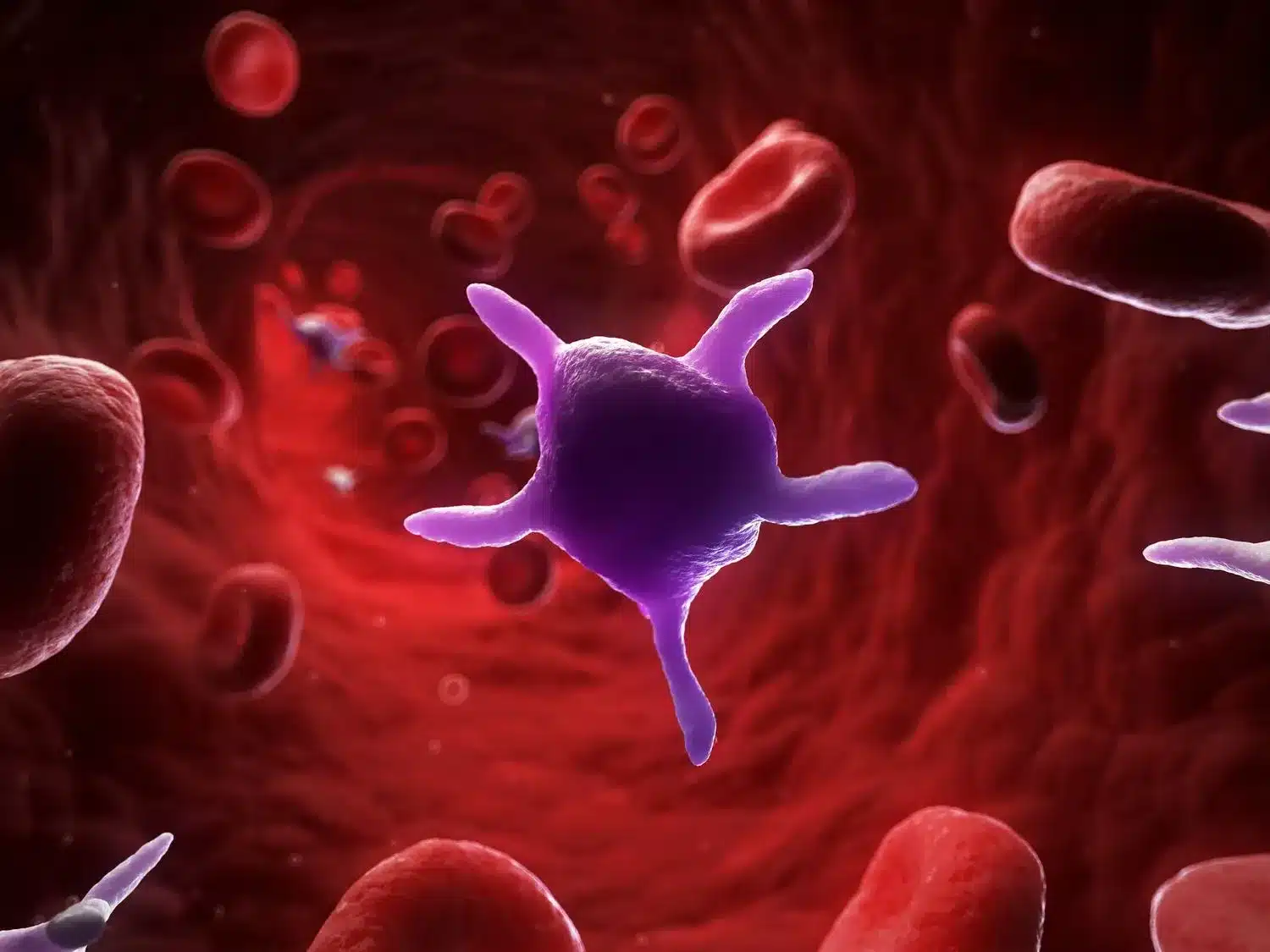About Platelets
- Platelets, or thrombocytes, are small, colorless cell fragmentsin our blood that help with clotting.
- Platelets are your body’s natural bandage to stop bleeding.
- Where are platelets made?
- Platelets form in the soft tissue of your bones (bone marrow). The largest cells in your bone marrow (megakaryocytes) make platelets.
- They form in the shape of a plate, which is where they get their name.
- They are smaller than red or white blood cells.
- How do platelets control bleeding?
- If one of your blood vessels gets damaged, it sends out signals to the platelets.
- The platelets then rush to the site of damage and form a plug (clot) to fix the damage.
- The process of spreadingacross the surface of a damaged blood vessel to stop bleeding is called adhesion.
- This is because when platelets get to the site of the injury, they grow sticky tentacles that help them stick (adhere) to one another.
- They also send out chemical signals to attract more platelets.
- The additional platelets pile onto the clot in a process called aggregation.
- What is a healthy platelet count?
- A normal platelet count ranges from 150,000 to 450,000 platelets per microliter of blood.
- Having more than 450,000 platelets is a condition called thrombocytosis; having less than 150,000 is known as thrombocytopenia.
- Symptoms of low platelets include bruising easily and unusual bleeding, such as excessive bleeding from a small cut or blood in urine or stool.
- Platelets can be essential to surviving surgeries such as organ transplant, as well as fighting cancer, chronic diseases, and traumatic injuries.
- Donor platelets are given to patients who don’t have enough of their own, or when a person’s platelets aren’t working correctly.
Q1: What is bone marrow?
Bone marrow is a spongy substance found in the center of the bones. It manufactures bone marrow stem cells and other substances, which in turn produce blood cells. Each type of blood cell made by the bone marrow has an important job. Red blood cells carry oxygen to tissues in the body. Platelets stop bleeding by helping blood clot. White blood cells fight infections.
Source: Synthetic platelets stanch bleeding, promote healing in animal models
Last updated on December, 2025
→ Check out the latest UPSC Syllabus 2026 here.
→ Join Vajiram & Ravi’s Interview Guidance Programme for expert help to crack your final UPSC stage.
→ UPSC Mains Result 2025 is now out.
→ UPSC Notification 2026 is scheduled to be released on January 14, 2026.
→ UPSC Calendar 2026 is released on 15th May, 2025.
→ The UPSC Vacancy 2025 were released 1129, out of which 979 were for UPSC CSE and remaining 150 are for UPSC IFoS.
→ UPSC Prelims 2026 will be conducted on 24th May, 2026 & UPSC Mains 2026 will be conducted on 21st August 2026.
→ The UPSC Selection Process is of 3 stages-Prelims, Mains and Interview.
→ UPSC Result 2024 is released with latest UPSC Marksheet 2024. Check Now!
→ UPSC Prelims Result 2025 is out now for the CSE held on 25 May 2025.
→ UPSC Toppers List 2024 is released now. Shakti Dubey is UPSC AIR 1 2024 Topper.
→ UPSC Prelims Question Paper 2025 and Unofficial Prelims Answer Key 2025 are available now.
→ UPSC Mains Question Paper 2025 is out for Essay, GS 1, 2, 3 & GS 4.
→ UPSC Mains Indian Language Question Paper 2025 is now out.
→ UPSC Mains Optional Question Paper 2025 is now out.
→ Also check Best IAS Coaching in Delhi

















